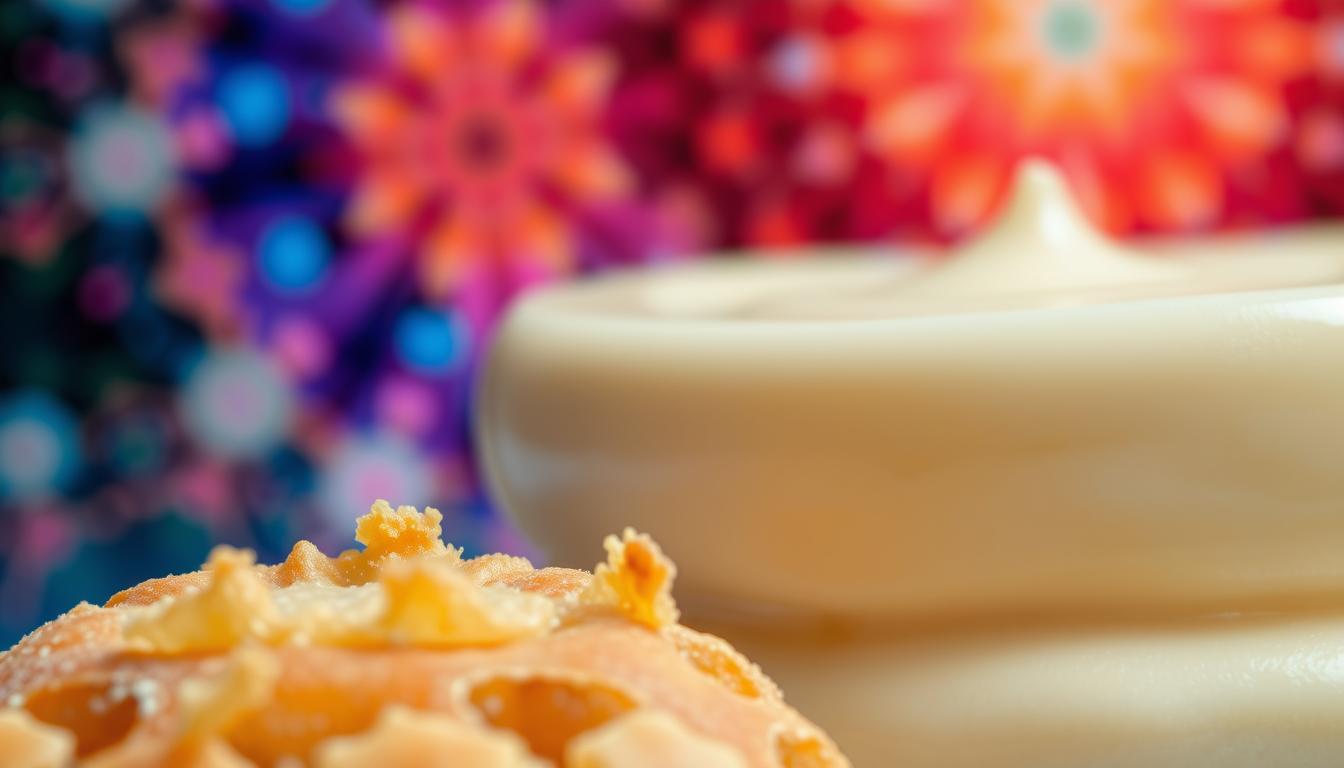Did you know your nervous system detects food textures 15 milliseconds faster than it identifies flavors? This split-second reaction shapes your entire eating experience, yet most people never consider how physical sensations influence their food preferences.
What you perceive as “delicious” depends on more than taste buds. Researchers found identical ingredients prepared with different textures create distinct flavor profiles. A silky chocolate mousse and crunchy chocolate bark activate separate neural pathways, even with the same cocoa content.
Your biological wiring responds to crispness as freshness and creaminess as richness. These automatic associations explain why soggy chips disappoint or why velvety textures feel indulgent. Food scientists now use this knowledge to design products that satisfy cravings with better nutritional profiles.
The interplay between teeth, tongue, and brain transforms basic nourishment into memorable experiences. By understanding these mechanisms, you gain insight into why certain textures feel comforting and others feel wrong – knowledge that changes how you shop, cook, and enjoy meals.
Key Takeaways
- Texture detection occurs faster than flavor recognition in your nervous system
- Your brain combines touch signals with taste to create complete flavor perceptions
- Identical ingredients taste different based on their physical consistency
- Neural pathways link specific textures to freshness or indulgence
- Food scientists optimize textures to enhance nutrition without sacrificing appeal
- Cultural background influences preferred mouthfeels more than biological factors
Exploring Mouthfeel: The Science of Texture and Taste
Every bite you take sends a flood of signals through specialized sensors in your mouth. These receptors don’t care about sweet or salty – they’re built to analyze how food behaves under pressure. This hidden network turns chewing into a data-gathering mission for your brain.

Defining Mouthfeel and Its Role in Flavor
Your experience of food relies on three separate systems working together. Taste buds identify basic flavors like bitter or umami. Aroma compounds create scent memories. But mouthfeel – the physical dance between food and your mouth – shapes what you ultimately perceive as flavor.
Research reveals that crispy foods trigger 40% more brain activity than soft ones. This explains why texture alone can make steamed vegetables seem boring while roasted ones feel satisfying. Your jaw muscles even send feedback about food density through nerve pathways you never consciously notice.
How Your Senses Interpret Textural Cues
Mechanoreceptors in your palate and tongue act like biological quality control sensors. They measure:
- Resistance when teeth pierce food surfaces
- Vibrations from crunching or snapping
- Temperature changes as items melt or firm up
Cultural training sharpens these perceptions. While English uses words like “chewy” or “gritty,” Japanese cuisine has specific terms for textures like nebaneba (slimy-sticky) and shakkuri (crispy-crumbly). This vocabulary gap shows how language shapes what textures we value – or even notice.
“Texture preferences aren’t just personal quirks – they’re neurological scripts written by both biology and experience.”
Neuroscience Behind How You Experience Crunch and Cream
Your mouth operates like a high-speed laboratory, analyzing every chew through specialized nerve networks. These pathways convert physical interactions into emotional responses before you consciously register flavors. This hidden process determines why some textures feel satisfying while others trigger rejection.

Mechanics of Sensory Interpretation
When you bite into crispy foods, three systems activate simultaneously. Mechanoreceptors track structural breakdown, auditory nerves process cracking sounds, and the insula cortex merges these signals into a unified experience. Creamy textures trigger different responses, with your brain monitoring viscosity and coating patterns on your tongue.
| Texture Type | Neural Pathways Activated | Associated Flavors |
|---|---|---|
| Crunchy | Auditory cortex, trigeminal nerve | Fresh, natural, energizing |
| Creamy | Orbitofrontal cortex, tactile sensors | Rich, comforting, indulgent |
Neuroplasticity in Flavor Perception
Emerging studies reveal your brain’s ability to rewire texture processing. When smell receptors fail – as seen in 80% of acute COVID cases – neural networks amplify mouthfeel sensitivity. This adaptation explains why some individuals develop heightened awareness of grit or smoothness during sensory loss.
Neurogastronomy research demonstrates how past experiences shape current perceptions. If you’ve associated vanilla with creamy desserts, your brain may interpret vanilla-flavored items as smoother than their actual consistency. These learned patterns create expectations that override objective reality.
Crunch vs. Creamy: Neuroscience of Mouthfeel
The way you break down food with your teeth directly shapes the flavors you perceive. Crunchy items release aromas through structural demolition – each chew fractures cell walls, unleashing volatile compounds that race to your nasal passages. Creamy substances work differently, coating your mouth to slowly release taste molecules over time.

Influence of Crunch and Cream on Aroma Release
When you bite into crispy foods, the mechanical destruction creates instant aroma explosions. Researchers found crushed almonds release 60% more aromatic compounds than ground ones. This explains why fresh vegetables taste vibrant when raw but muted when puréed.
Creamy textures demand precise engineering. Mayonnaise achieves its smoothness through oil droplets measuring 2-8 microns – smaller than human hair. Food scientist Dr. Linda Bartoshuk notes:
“These micro-droplets act like lubricants, tricking your brain into perceiving richness without actual fat content.”
Chocolate’s magic lies in cacao butter’s unique melting point – exactly 93°F. This causes solid chocolate to transform into silky liquid at body temperature. Your mouth interprets this phase change as luxurious smoothness while releasing layered flavors gradually.
Contrasting textures in meals create sensory excitement. A crunchy walnut in creamy yogurt stimulates different receptors simultaneously. This variety prevents “mouth fatigue” and makes eating experiences more memorable.
Your brain tracks texture duration too. Crisp sensations fade quickly, while creamy coatings linger. This timing difference affects how you perceive flavor intensity and satisfaction levels throughout meals.
Cultural and Culinary Insights into Texture
Your plate tells stories beyond flavor. Cultures worldwide prioritize texture differently, shaping how people experience meals. In Japan, chefs craft dishes where mouthfeel becomes the main event. America often treats texture as background support for bold tastes.
Comparative Perspectives: Japanese Texture Vocabulary vs. American Descriptions
Japanese cuisine uses 400+ texture words compared to America’s 80. This linguistic gap reveals deeper cultural values. While English describes “chewy” or “crispy,” Japanese has terms like nebaneba (slimy-sticky) for dishes like natto.
| Japanese Terms | American Equivalents | Common Foods |
|---|---|---|
| Shakkuri | Crispy-crumbly | Tempura batter |
| Kori-kori | Firm-crunchy | Pickled radish |
| Torori | Silky-stretchy | Mochi rice cakes |
Traditional techniques like tsukemono (pickling) transform vegetables into crunchy marvels. Chefs marinate produce for days, creating textures that activate jaw muscles from molars to temples. Seaweed exemplifies this philosophy – prepared six ways from chewy to brittle in a single meal.
Your ability to detect subtle textures grows with vocabulary. Japanese diners distinguish 5+ seaweed mouthfeels most Americans lump as “chewy.” As food researcher Dr. Hiroshi Ono notes:
“Texture literacy trains your brain to notice details others miss – like how octopus tentacles offer three distinct resistances when bitten.”
This focus extends to nutrition. Delicate fish textures signal freshness, while varied vegetable preparations make plant-based meals satisfying. Understanding these differences helps you appreciate why some cultures prioritize mouthfeel as art.
Texture Transformations: From Kitchen Science to Home Cooking
Your kitchen holds more power to shape eating experiences than you realize. Simple techniques can amplify textures, turning ordinary meals into sensory adventures. Let’s explore how to apply food science principles in everyday cooking.
Innovative Techniques to Enhance Mouthfeel
Temperature manipulation creates dramatic texture shifts. Chilling soups before serving tightens their structure, while flash-freezing herbs preserves crispness. Try dusting roasted vegetables with powdered mushrooms – their natural glutamates boost savory notes without altering crunch.
For creamy textures without heavy fats, blend cooked lentils into sauces. Their starch content mimics richness while adding protein. A handheld milk frother can aerate purees, creating light foams that dissolve intriguingly on your tongue.
Recipes That Showcase the Magic of Crunch and Creamy Textures
Contrast defines memorable dishes. Top velvety butternut squash soup with spiced pepitas for audible crunch. Layer silky hummus under quick-pickled vegetables in wraps – their acidity cuts through richness. Even breakfast benefits: try fluffy scrambled eggs from a rice paired with crispy hash browns.
Remember, texture thrives on contrast. Mix chewy dried fruits into brittle granola clusters. Serve chilled gazpacho with warm, crusty bread. Your mouth registers these combinations as complexity, making simple ingredients feel extraordinary.



